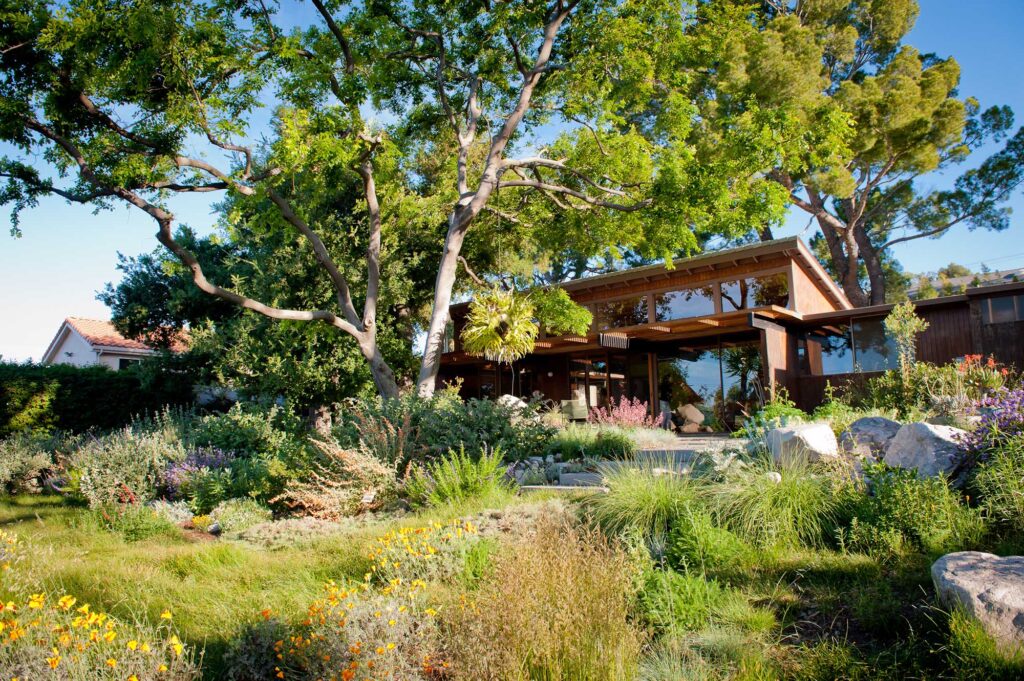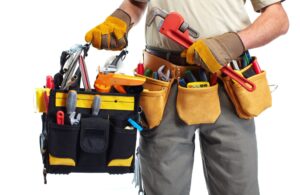
A growing number of homeowners are wondering what they can do to safeguard their properties and the surrounding area as wildfires pose a threat to the nation. The wildland-urban interface (WUI), the fastest-growing housing sector in the nation and the most fire-prone, is home to one-third of all Western Americans.
According to the authors, you can make your landscape more fire-smart wherever you reside by putting these easy yet effective recommendations into practice. The ultimate message is that there’s no assurance your house won’t burn down, but you can design a habitat to make it as safe and attractive as you can. “[Fire] may happen anyplace,” adds Edwards.
What’s Firescape?
“The process of constructing fire-resilient landscapes by decreasing fire threats and maintaining natural ecosystems” is how Edwards describes firescaping. Defensible area must be established while promoting a healthy environment that supports animals and people through the soil, water, and air.
The distinction is significant because, according to Edwards and Schleiger, plants and organic mulch, when planted and maintained appropriately, can slow down fire. In contrast, many homeowners (and some insurance companies) think that eliminating the majority of organic matter from the landscape, from trees to mulches, is the first step toward becoming fire-resilient.

Important Firescaping Components:
Plants Resistant to Fire: The usage of plants with high moisture content and low combustibility is emphasized in fire escape techniques. Because they tend to be more hardy, native species that have adapted to the local environment are frequently favored. Succulents, deciduous trees, and certain ground coverings that are less likely to catch fire are a few examples.
Plant Positioning: The right arrangement of plants is essential for fire escape. Defensible zones are created by keeping plants and buildings—especially houses—a safe distance apart. Shrubs should be placed apart to lessen the chance of flames spreading, and trees should be trimmed to prevent fire from rising into the canopy.
Hardscaping Features: You may create firebreaks in your landscape by using non-combustible features like brick paths, gravel, and rocks. In addition to improving the area’s visual appeal, these hardscaping elements work well as barriers to stop or delay the spread of wildfires.
Mulch: An essential safety component is the appropriate choice and application of mulch. If the mulch is placed within five feet of the house, it should not catch fire (gravel is an excellent option). For yards, composted mulch is the ideal option because the wooden material has partially broken down.
Frequent Maintenance: Firescaping is a continuous activity that has to be done on a frequent basis. This include removing dry or dead vegetation, maintaining debris-free gutters and roofs, and maintaining a close eye on the landscape’s general state. Keeping a defensible area is essential to making sure that firescaping attempts are successful.
Community Cooperation: The best results from fire escape occur when whole communities embrace the technique. Together, we can build neighborhoods that are resistant to wildfires. Encouraging communication, coordinating landscaping projects, and raising knowledge of the advantages of firescaping may fortify community-wide wildfire prevention measures.
Firstly, your family, then your house
Before doing anything else, Edwards and Schleiger emphasize creating an escape plan to protect your loved ones in the case of a fire. As part of your wildfire action plan, you should prepare an evacuation plan, contact information, a “go bag,” and packing lists of essentials.
Edwards states, “One of the greatest recommendations is to get active with your local Fire Safe Council to learn about local emergency methods.” Create one if there isn’t already one.
The writers of the book suggest consulting a fire specialist or specialized contractor to evaluate your home’s safety, even though it provides advice on safeguarding your home’s construction.
Advantages of Firescaping
Enhanced Safety: The main objective of firescaping is to provide a buffer zone that shields buildings and residences from the direct danger of wildfires. Homeowners may augment overall safety and drastically lower the chance of property damage by employing fire-resistant landscaping practices.
Environmental Sustainability: Using native plants that can withstand drought is a common practice in firescaping, which helps to conserve water supplies. Furthermore, preserving a healthy ecology supports the biodiversity and fauna in the area.
Aesthetic Appeal: Fire-resistant landscaping does not always have to be aesthetically pleasing, despite popular belief to the contrary. Well-chosen plants and thoughtful planning may provide stunning, hardy gardens that raise home values.
How to Create a Fire-Smart Landscape to Protect Your House from Wildfires
Consider the areas of defense that surround your house as part of your landscaping design. According to research, the first two zones significantly affect fire safety1.
Zone Noncombustible (NZ)
The “Noncombustible Zone” is the first five feet from the walls of your home. This area shouldn’t include any flammable materials throughout the fire season. This 15-foot zone should not contain wood fences, railings, arbors, mulch, or woody plant material in high-risk locations for wildfires.
With this method, you have to give up on the typical foundation plants, but you may still have seasonal color outside of the fire season by using bulbs, ephemerals, or wildflowers that bloom in the spring. Edwards says to just make sure you brush away any leftover biomass before fire season.
Zone of Lean, Clean, and Green (LCG)
Lean, Clean, and Green is the second zone, which is 5 to 30 feet (more if it’s slope-facing). In a high-risk location for fires, this area may span up to ninety feet.
Here’s where you start planting. Lean plants should be maintained apart, with lots of airflow and fire breaks. Maintain a debris-free space and well-pruned plants. To keep the plants happy and healthy, give them water.
Edwards suggests layered but discontinuous plants in islands divided by noncombustible hardscapes like bare ground, pavers, or gravel, as an alternative to foundation-style solid rows of shrubs. These pathways, which should be four feet wide, improve wind circulation and serve as fire breaks by limiting the accumulation of plant materials and wind-blown leaves in eddies that may ignite a fire.
See where leaves gather in the fall to locate eddies, and make sure such areas are removed. Fences are a major fire route; keep them free of spider webs and debris. Trees should not be taller than fifteen feet and should be placed such they fall outside of the noncombustible zone.
According to Edwards, “you are minimizing wind speed and wind turbulence, which can minimize the circulation of embers around your home by having plants surrounding your home that are deliberately planted and maintained in an LCG way.” Also, the visual richness of your landscape increases significantly.
Sources:
https://www.bhg.com/what-is-firescaping-8602591
https://firesafemarin.org/create-a-fire-smart-yard/firescaping/#gsc.tab=0



